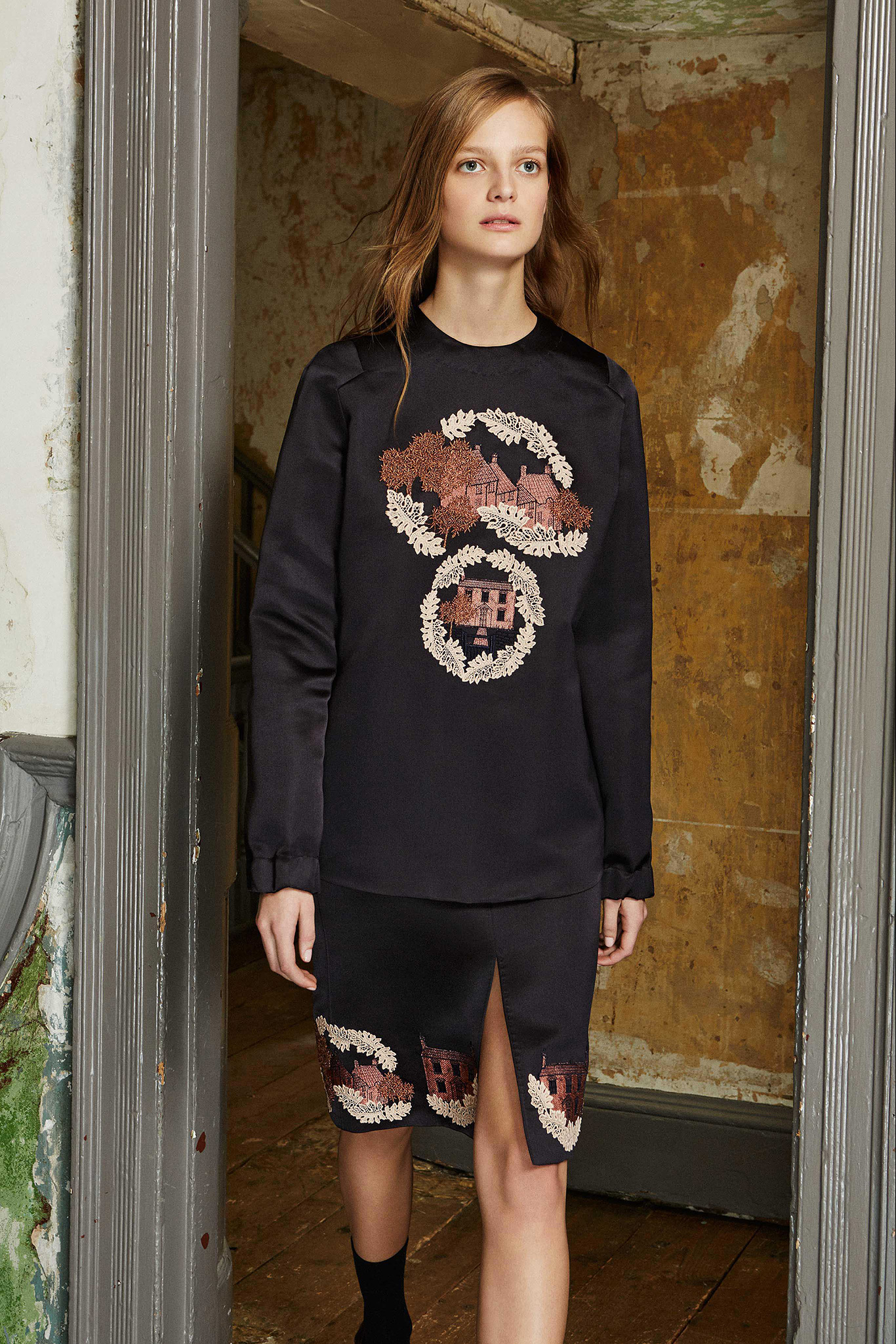
Mulberry’s attempted reconceptualization as a luxury powerhouse temporarily shook it loose from its moorings, so the recent focus has been on a back-to-basics effort to relocate what made the company work so well in the first place. The answer? Bags. Lots of them. Leather goods make up 70 percent of Mulberry’s sales, with the Alexa, the Lana, and the Cara being particularly successful building blocks for the business. Pre-Fall saw some equally promising additions to the range: the Willow, for instance, with its zip-off clutch; the Freya hobo bag; the Darby satchel; and, best of all, the Delphi, a bag that ingeniously reverses, from calfskin to suede, say, or even crocodile.
The collection of clothes that accompanied these accessories fell effortlessly under the umbrella of “heritage ready-to-wear,” a predictable but safe stand to take while Mulberry bides its time until the arrival of new creative director Johnny Coca next year. The label may be a mere newbie compared to classic brands like Burberry and Pringle of Scotland, but its calling card has always been its Britishness. The reference points here were the wallpapers and curtains in country houses, William Morris-influenced Arts and Crafts-iness in oak-leaf prints and lace, Fair Isle knits, and fisherman’s sweaters. Lace versions of an old village street scene looked like traditional doilies. That old-lady-ish association hovered over the collection. We were invited to imagine the wardrobe of a woman who’d aged through the 1920s to the 1950s. So a drop-waist cocktail dress in dégradé Lurex (hint of Jazz Age decadence) rubbed shoulders with the kind of no-nonsense tailored topcoat an austerity-minded war bride might have worn.

















